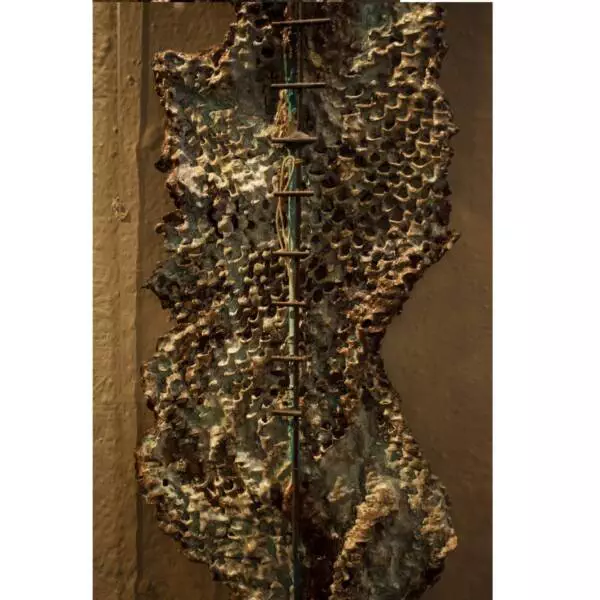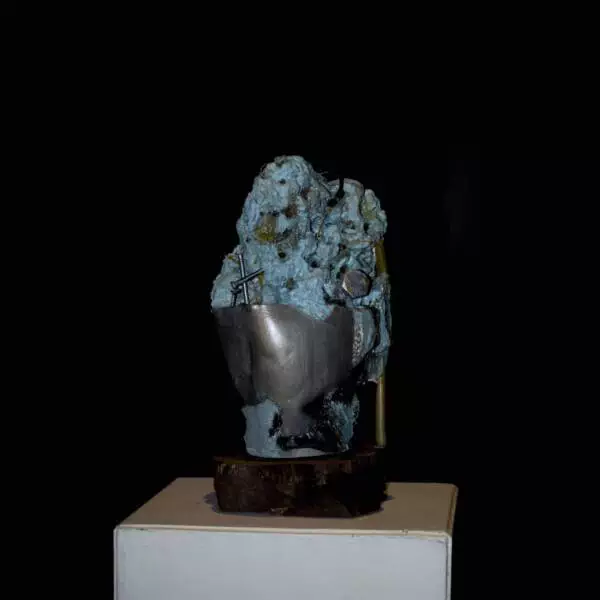Anju Kaushik is renowned for her use of what is typically referred to as “waste materials” to create artwork that transforms the mundane into the beautiful, turning trash and garbage into a collectible object with a feeling of raw urban beauty.
The notion of modern “recycling” practice is rejected in a culture that is notorious for its “use and toss away” mentality.
Anju’s relationship with the items is motivated by an intuitive desire to remake the object, as well as by chance events and occasionally, less than fully conscious alignment. Her pieces frequently form a loose narrative in which she offers commentary on the environment.





Biography
Anju Kaushik is renowned for her use of what is typically referred to as "waste materials" to create artwork that transforms the mundane into the beautiful, turning trash and garbage into a collectible object with a feeling of raw urban beauty. Her most recent pieces have a sculpture-like bent, favoring high-relief surfaces, and lately, she has been making progress toward fully embracing the third dimension. She prefers to convert abandoned items by encasing them in plaster of Paris, concrete, and wood. Anju's method is unique in that it involves rescuing old, rusted, and abandoned items and giving them new life.
The notion of modern "recycling" practice is rejected in a culture that is notorious for its "use and toss away" mentality. The artifacts raise the thing above what could seem to be a "mundane life," challenging the idea of what is rejected. A piece of pedestalized concrete is brushed with paint, nails, and wire before being set on a concrete bracket, forging new connections between the dissimilar waste materials and between the viewer and the object.
Anju's relationship with the items is motivated by an intuitive desire to remake the object, as well as by chance events and occasionally, less than fully conscious alignment. Her pieces frequently form a loose narrative in which she offers commentary on the environment. For example, a fossilized fish shape serves as a moving reminder of the trash and debris that litter our cities, or a mechanical object that permeates the natural landscape.
Since 2008, Anju Kaushik has been doing solo exhibitions under the direction of renowned artist Rameshwar Broota. She has participated in several significant exhibitions, such as the Individual Palettes by the Raza Foundation 2019, Learning Curves at Jawahar Kala Kendra, Jaipur (2019), Art Spotting II at Art Positive, National Exhibition SCZCC 2016, and so on. She won a senior scholarship from the Ministry of Culture in 2019, an award from Delhi Blue-AIFACS studio pottery in 2019, a fellowship from Gallery Art Positive in 2012, and she was chosen as one of the five emerging artists of the year in 2018 by Best College Art. Her work is included in numerous public and private collections, including those at the Vadehra Art Gallery, Sahitya Kala Parishad, Lalit Kala Akademi, and others.